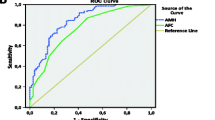Summary
The circulating anti-Müllerian Hormone (AMH) is considered a robust ovarian biomarker available today, inasmuch as, it has replaced the usage of age, antral follicle count (AFC) or follicle-stimulating hormone (FSH) levels. In this brief review, first we discuss its role during fetal and adult life in regulating follicle development. Subsequently, based on existing literature, we consider biological, preanalytical and analytical pitfalls and inherent biases in its assessment. Different generations of ELISA assays have been used since 1990s for AMH detection. However, more recently, rapid new automated methods with higher analytical sensitivity have been introduced. In view of this development, a major concern is to establish new reference and cutoff values based on these latest methods. Furthermore, the lack of an international standard makes the issue more complex. Our review, while asserting the pivotal role of AMH in the evaluation of ovarian reserve, suggests that more than one determination would be desirable before commencing the IVF treatment. Overall, automated methods have allowed to adopt AMH measurement as a routine test providing rapid access to results, thus contributing to better treatment options in centers for medically assisted reproduction.

Similar content being viewed by others
Bibliografia
Behringer RR, Finegold MJ, Cate RL (1994) Müllerian-inhibiting substance function during mammalian sexual development. Cell 79:415–425
Nilsson EE, Schindler R, Savenkova MI et al. (2011) Inhibitory actions of Anti-Müllerian Hormone (AMH) on ovarian primordial follicle assembly. PLoS ONE 6:e20087
van Houten EL, Themmen AP, Visser JA (2010) Anti-Müllerian hormone (AMH): regulator and marker of ovarian function. Ann Endocrinol (Paris) 71:191–197
Pankhurst MW, McLennan IS (2013) Human blood contains both the uncleaved precursor of anti-Müllerian hormone and a complex of the NH2- and COOH-terminal peptides. Am J Physiol Endocrinol Metab 305:E1241–E1247
Themmen AP (2005) Anti-Müllerian hormone: its role in follicular growth initiation and survival and as an ovarian reserve marker. J Natl Cancer Inst Monogr 34:18–21
van Rooij JA, Broekmans FJ, Te Velde ER et al. (2002) Serum anti-Müllerian hormone levels: a novel measure of ovarian reserve. Hum Reprod 17:3065–3071
National Collaborating Centre for Women’s and Children’s Health NICE (2013) Fertility: assessment and treatment for people with fertility problems. The Royal College of Obstetricians and Gynaecologists, London. https://www.nice.org.uk/guidance/cg156/evidence/full-guideline-pdf-188539453 (Accesso 25 settembre 2018)
Michael ABN (2017) Measurement of the Anti- Müllerian Hormone (AMH) in endocrinology: a mini-review. Invest Gynecol Res Women’s Health. https://www.healthconsultancynaafs.com/2017/10%20nov/IGRWH.000509%20AMH%20Published.pdf (Accesso 25 settembre 2018)
van Disseldorp J, Lambalk CB, Kwee J et al. (2010) Comparison of inter- and intra-cycle variability of anti-Müllerian hormone and antral follicle counts. Hum Reprod 25:221–227
Rustamov O, Smith A, Roberts SA et al. (2013) The measurement of anti-Mullerian hormone: a critical appraisal. J Clin Endocrinol Metab 99:723–732
Hadlow N, Brown SJ, Habib A et al. (2016) Quantifying the intraindividual variation of antimüllerian hormone in the ovarian cycle. Fertil Steril 106:1230–1237
Merhi ZO, Seifer DB, Weedom J et al. (2012) Circulating vitamin D correlates with serum anti-Müllerian hormone levels in late reproductive-aged women: women’s interagency HIV study. Fertil Steril 98:228–234
Kallio S, Puurunen J, Ruokonen A et al. (2013) Antimüllerian hormone levels decrease in women using combined contraception independently of administration route. Fertil Steril 99:1305–1310
Plante BJ, Cooper GS, Baird DD et al. (2010) The impact of smoking on antimüllerian hormone levels in women aged 38 to 50 years. Menopause 17:571–576
Moy V, Jindal S, Lieman H et al. (2015) Obesity adversely affects serum anti-müllerian hormone (AMH) levels in Caucasian women. J Assist Reprod Genet 32:1305–1311
Tal R, Seifer DB (2013) Potential mechanisms for racial and ethnic differences in antimüllerian hormone and ovarian reserve. Int J Endocrinol 818912
Dorizzi RM (2017) Biotina e interferenze nei metodi immunologici; problemi e opportunità. Riv Ital Med Lab 13:1–9
Long WQ, Ranchin V, Pautier P et al. (2000) Detection of minimal levels of serum anti-Müllerian hormone during follow-up of patients with ovarian granulosa cell tumor by means of a highly sensitive enzyme-linked immunosorbent assay. J Clin Endocrinol Metab 85:540–544
Groome NP, Cranfield M, Themmen A et al (2011) Immunological assay and antibodies for anti-müllerian hormone. Patent application filed 24th May 2006. Patent granted March Ist 2011 Immunological assay and antibodies for anti-Müllerian hormone. US Patent 7, 897, 350 B2. https://patentimages.storage.googleapis.com/a2/64/9c/5b602e9774d5c7/US7897350.pdf (Accesso 25 settembre 2018)
Kumar A, Kaira B, Patel A et al. (2010) Development of a second generation anti-Müllerian hormone (AMH) ELISA. J Immunol Methods 362:51–59
Lee JY, Ahn S, Lee JR et al. (2017) Reference values for the revised anti-Müllerian hormone generation 2 assay: infertile population-based study. J Korean Med Sci 32:825–829
Pankhurst MW, Chong YH, McLennan IS (2014) Enzyme-linked immunosorbent assay measurements of anti-Müllerian hormone (AMH) in human blood are a composite of the uncleaved and bioactive cleaved forms of AMH. Fertil Steril 101:846–850
van Helden J, Weiskirchen R (2015) Performance of the two new fully automated anti-Müllerian hormone immunoassays compared with the clinical standard assay. Hum Reprod 30:1918–1926
La Marca A, Sunkara SK (2014) Individualization of controlled ovarian stimulation in IVF using ovarian reserve markers: from theory to practice. Hum Reprod Update 20:124–140
Alanazi H, Bushaqer N, Ayyoub H et al. (2017) Antimüllerian hormone (AMH) level and IVF/ICSI cycle outcome in expected poor responders. Middle East Fertility Society Journal 23:246–250
Anderson RA, Anckaert E, Bosch E et al. (2015) Prospective study into the value of the automated Elecsys antimüllerian hormone assay for the assessment of the ovarian growing follicle pool. Fertil Steril 103:1074.e4–1080.e4
Iliodromiti S, Anderson RA, Nelson SM (2015) Technical and performance characteristics of anti-Müllerian hormone and antral follicle count as biomarkers of ovarian response. Hum Reprod Updat 21:698–710
Author information
Authors and Affiliations
Corresponding author
Ethics declarations
Conflitti di interesse
Nessuno.
Studi condotti su esseri umani e animali
Per questo tipo di studio non è richiesto l’inserimento di alcuna dichiarazione relativa agli studi effettuati su esseri umani e animali.
Rights and permissions
About this article
Cite this article
Cuomo, L., Vitillo, M. Ormone anti-mülleriano (AMH): utilità e limiti nella valutazione della riserva ovarica. Riv Ital Med Lab 14, 203–207 (2018). https://doi.org/10.1007/s13631-018-00205-4
Received:
Accepted:
Published:
Issue Date:
DOI: https://doi.org/10.1007/s13631-018-00205-4




